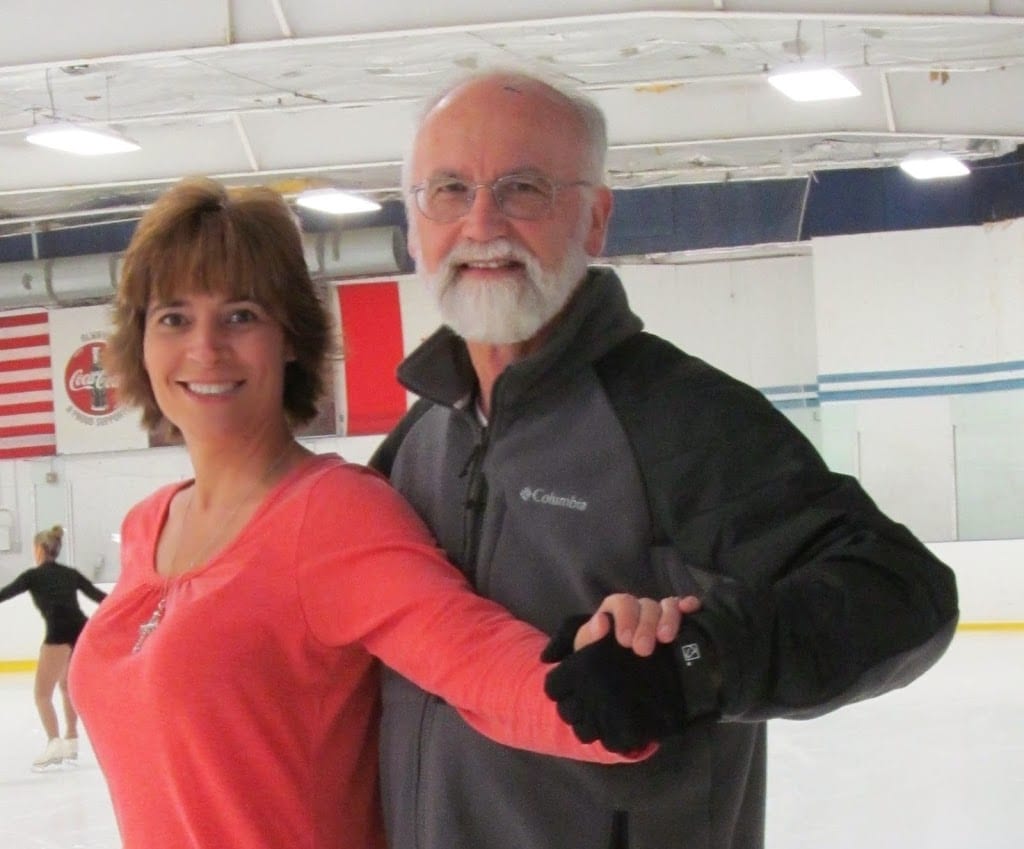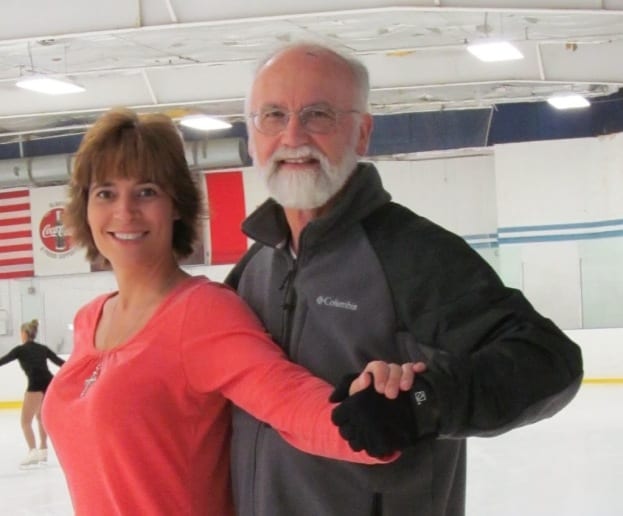Roger Estey spent most of his teenage and college years figure skating and ice dancing. Then along came life off ice – a job, marriage, kids… Those long hours at the rink receded deep into his past.
Thirty years later, though, circumstances brought him back.
“When I walked back into the rink it felt like home,” he says. “The smells … the dampness of the air … the echo sounds. It felt really good.”
 |
| TBSA ice dance coach Marta Nilsen, left, poses with her Gold medalist ice dance student, Roger Estey. |
So good, in fact, that he has returned to skating and is trying to spread the word about the joys of ice dancing.
At 61, Estey recently became a gold medalist in ice dance after a 30-year break. Tampa Bay Skating Academy ice dance coach Marta Nilsen helped him pass the four Gold dances: The Viennese Waltz, the Argentine Tango, the Quickstep, and the Westminster Waltz. The accomplishment, which began about two years ago and culminated in March, is a first for both of them.
“He’s my first dance gold medal student,” Nilsen says. “I hadn’t partnered anyone that far. It was a lot of fun and good exercise.”
For Estey, it all began in Massachusetts in the early 60s. Having skated on a pond as a child, he took his first figure skating lesson when he was 13 years old.
Back then, figure skaters were expected to learn the basic dance steps and patterns, he says. A tall teen, he was asked to take some of the girls through several of the dance tests. That’s when he met his training and competition partner, Cindy Wright.
“Cindy and I had a very short, low-level competitive career,” he says. “Things were very different then. There were very few competitions. It’s not like how it is now where there are lots of competitions to enter.”
By high school, ice dancing had become his passion.
 |
| Roger Estey dances with Coach Nilsen. Estey recently passed his Gold medal ice dances. |
“Ice dance was much more fun and rewarding,” he says. “Back then it was a social event. We did it almost every night of the week for two to three hours, and then we’d go out for coffee afterward. It was a ball. It was one of those things that rinks did then. When I came back, it was gone.”
Estey graduated from college and completed the Pre-Gold dance tests in 1973. The levels for dance are Preliminary, Pre-Bonze, Bronze, Pre-Silver, Silver, Pre-Gold and Gold.
After college, he began coaching. But his time on the ice was eventually replaced with spending time with his family – his wife, Margaret, and three stepchildren. Over the years, he worked mostly in real estate until one day, about three years ago, Margaret passed away suddenly.
“That kind of left me at a loss of what to do with my life,” he says. “We had a very close relationship. We were life partners and business partners.”
It was a visit to see family that brought him back to the ice.
“My grandson, Jordan, and I took a road trip and wound up at an ice rink in Phoenix,” he says. “All of those sensations we rink rats know in our bones started to come back.”
But after taking such a long break from the ice, Estey had to get back in shape.
“My brain told me everything I needed to know, but my body said, ‘no, not today,'” he says, recalling those first days back.
Estey passed two of the four Gold dances — the Viennese Waltz and the Argentine Tango — in early 2013. His journey to the gold, though, hit a roadblock in May.
“I was practicing in preparation for the test and I crashed,” he says. “Next thing I knew I was flying through the air and landed on my elbow. That put everything off for a while.”
There were some moments after that, too, when Estey thought about whether his goal to get Gold was a good idea. These were fleeting thoughts. He started practicing again in November and passed the Quickstep in February and the Westminster Waltz in March.
“Personally, it’s a big deal that I did it,” he says. “To have come back after being away and then after the injury, it’s meaningful. Not everybody can do that. It’s mental but it’s also very physical and cardiovascular. You have to up your game to test. I’m no Charlie White (Olympic Champion Ice Dancer), but you want to be at the level where the judges say, ‘Hey, he can do this.'”
And do it he did. Even though he could have tested on the masters track, which is for ages 50 and older, he passed his Gold tests on the adult track.
“At least I was with the 21-year-olds instead of the 65-year-olds,” he says.
Nilsen, who has coached for over 20 years, says she would like to keep on dancing with Estey, testing up through the international dances.
“After you get up to the Gold level, it’s a blast to skate,” she says. “But it’s hard to find a guy to dance with.”
Estey says he and Nilsen are a good match on the ice.
“We really skate well together,” he says.
Estey hopes to bring “ice dance socials” back to this area to get more skaters enjoying the sport.
“Ice dancing gives you really good edges, power, flow and rhythm,” he says. “It’s something adults can do their whole lives.”
And Estey is living proof.






